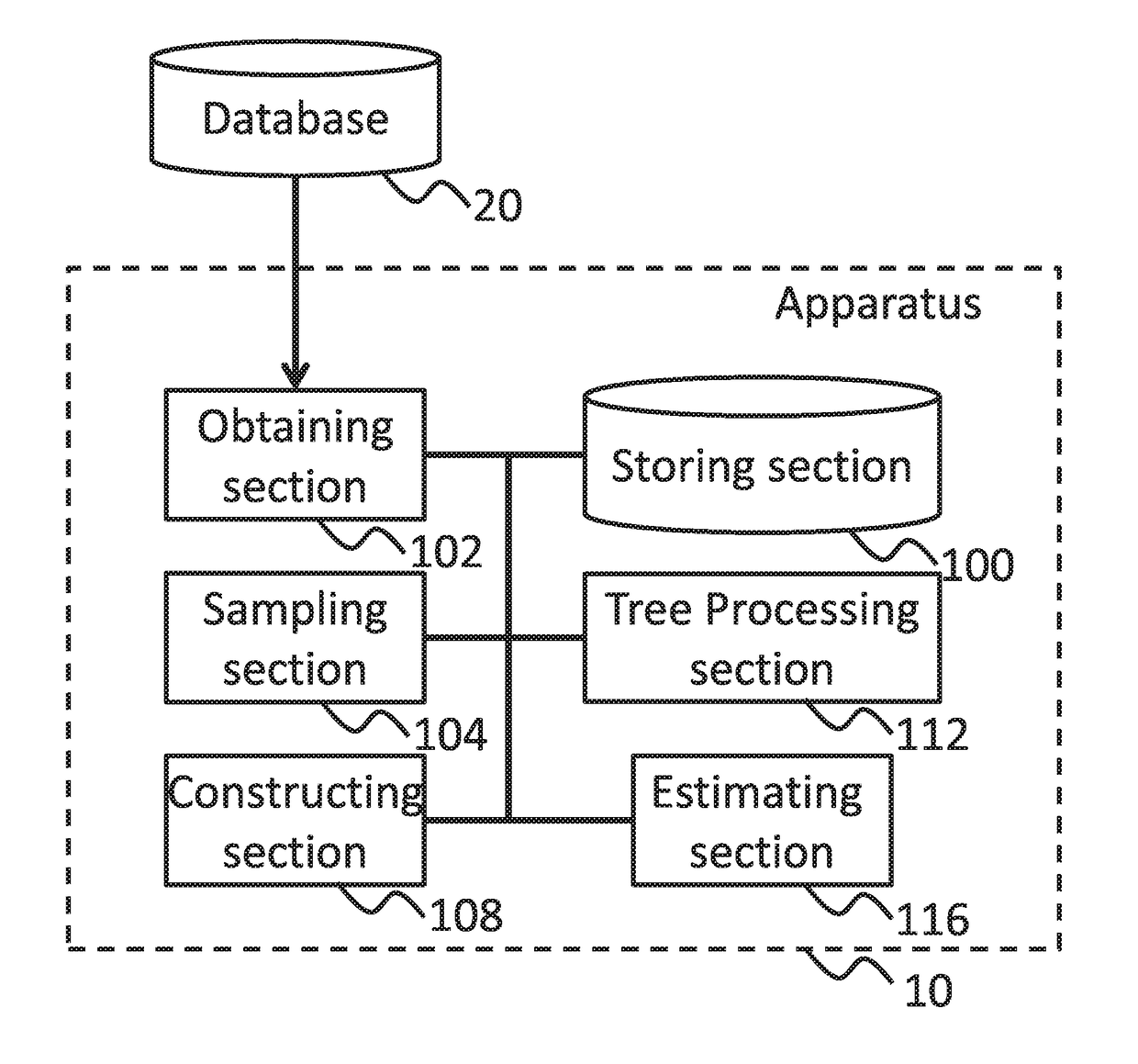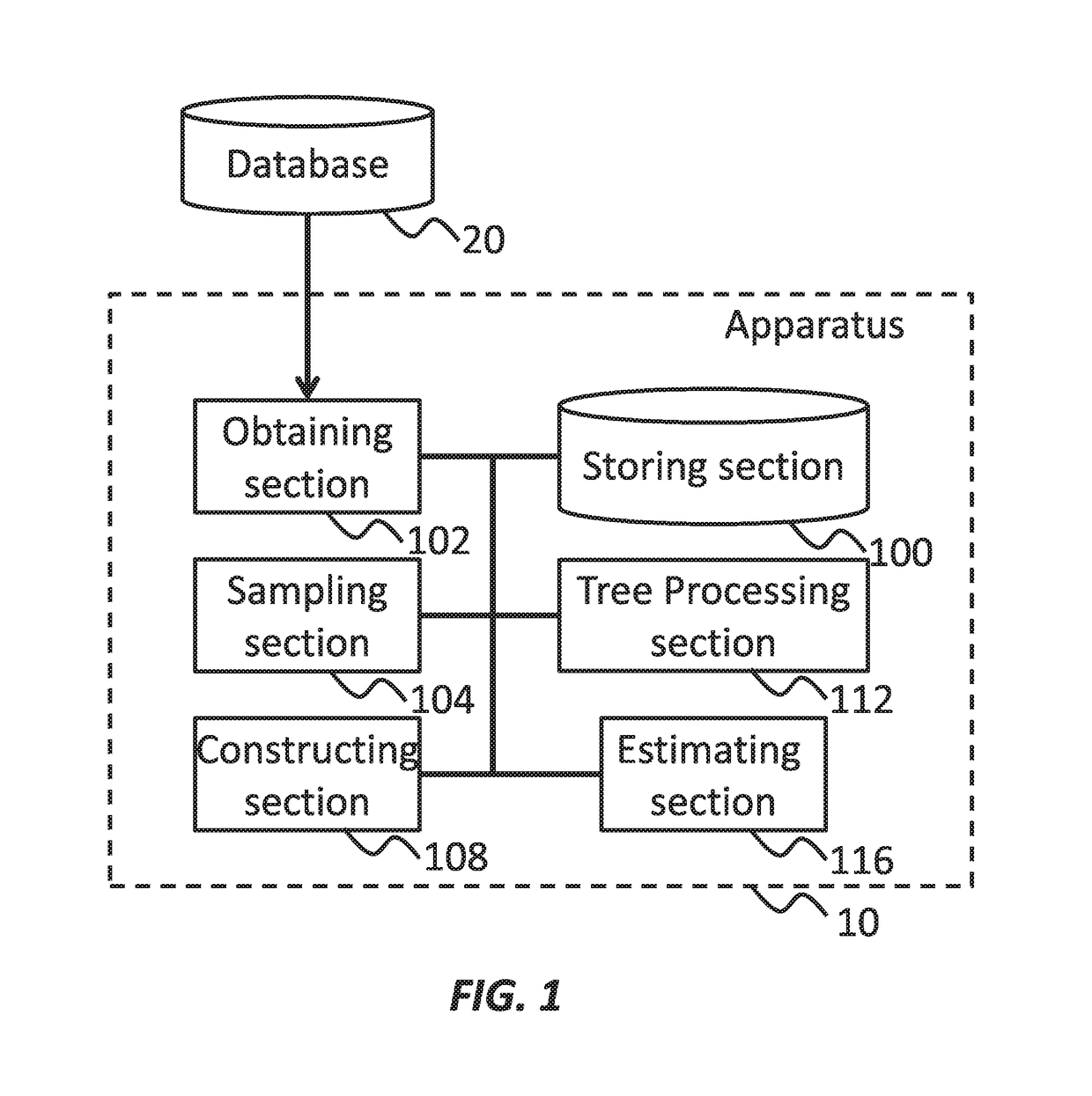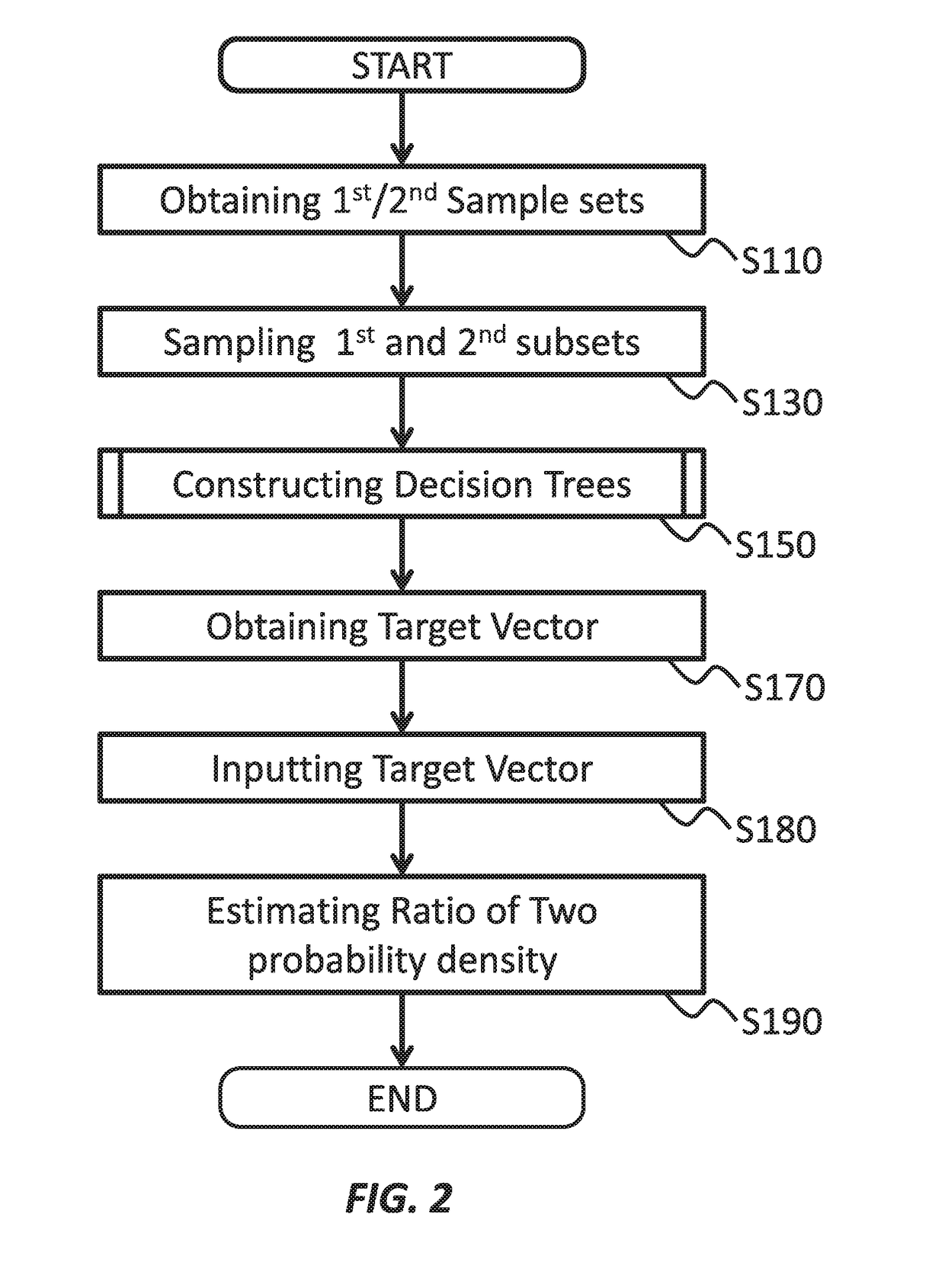Probability density ratio estimation
a probability density and ratio technology, applied in the field of probability density ratio estimation, can solve the problems of insufficient accuracy and estimation of ratio, and achieve the effect of less computational resources and improved estimation accuracy
- Summary
- Abstract
- Description
- Claims
- Application Information
AI Technical Summary
Benefits of technology
Problems solved by technology
Method used
Image
Examples
Embodiment Construction
[0018]Hereinafter, example embodiments of the present invention will be described. The example embodiments shall not limit the invention according to the claims, and the combinations of the features described in the embodiments are not necessarily essential to the invention.
[0019]FIG. 1 shows an exemplary configuration of an apparatus 10 (e.g., a computer, programmable circuitry, etc.), according to an embodiment of the present invention. The apparatus 10 may construct at least one decision tree for estimating a ratio of probability density. The apparatus 10 may estimate the ratio of probability density of a target vector based on the at least one decision tree.
[0020]The apparatus 10 may comprise a processor and one or more computer readable mediums collectively storing instructions. The instructions, when executed by the processor or programmable circuitry, may cause the processor or the programmable circuitry to operate as a plurality of operating sections. Thereby, the apparatus ...
PUM
 Login to View More
Login to View More Abstract
Description
Claims
Application Information
 Login to View More
Login to View More - R&D
- Intellectual Property
- Life Sciences
- Materials
- Tech Scout
- Unparalleled Data Quality
- Higher Quality Content
- 60% Fewer Hallucinations
Browse by: Latest US Patents, China's latest patents, Technical Efficacy Thesaurus, Application Domain, Technology Topic, Popular Technical Reports.
© 2025 PatSnap. All rights reserved.Legal|Privacy policy|Modern Slavery Act Transparency Statement|Sitemap|About US| Contact US: help@patsnap.com



